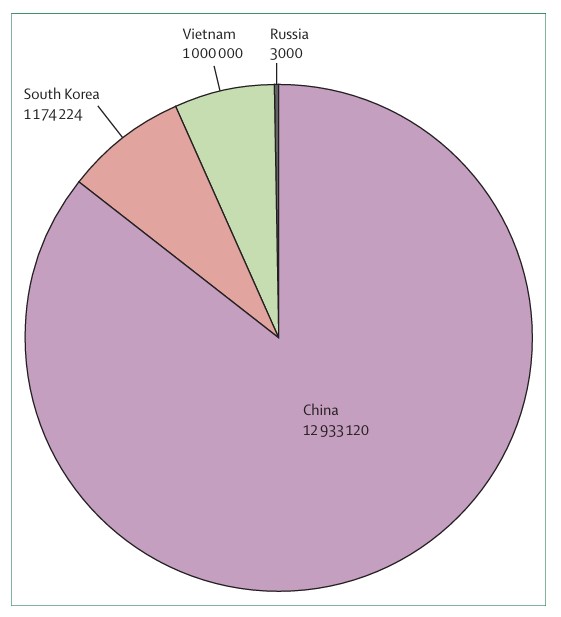
Clonorchiasis, also called Clonorchis sinensis, is the presence of Chinese Liver Fluke disease and is classified as a dental parasitic infection acquired through food consumption. Our company utilizes sophisticated technologies and offers exceptional services in order to develop and produce vaccines against such infections.
Introduction to Clonorchiasis
Clonorchiasis a disease caused by the trematode Clonorchis sinensis is a growing public health issue in many parts of Asia and more specifically China. Research shows that approximately 20 percent of fish consumers, who tend to eat raw or half cooked fish, living in endemic zones are infected with the disease. The disease also brings certain complications including cholangitis and is a risk factor for the development of cholangiocarcinoma.
 Fig.1 Global distribution of clonorchias. (Qian, M. B., et al., 2016)
Fig.1 Global distribution of clonorchias. (Qian, M. B., et al., 2016)
Diagnosis Development of Clonorchiasis
Recent years have seen significant progress in the development of diagnostic methods for clonorchiasis, focusing on two key areas:
 Molecular Diagnostics
Molecular Diagnostics
Recent advances cover refined PCR techniques to enhance specificity and sensitivity. Real time PCR has made it possible to accurately measure the parasite load. LAMP technology appears to hold promise for rapid testing in the fields Real time d droplet PCR holds promise in the detection of the low intensity infections which can facilitate the diagnosis in its infancy.
 Biomarker Discovery & Development
Biomarker Discovery & Development
Multi-omics approaches have uncovered novel biomarkers. Proteomics research identified in the excretory-secretory of C. sinensis some products being targeting candidates. Circulating miRNAs may be able to function as biomarkers non-invasively. Metabolomics exhibited signatures in each biofluid. The new discoveries may bring advancement in the developed diagnostics with respect to the early as well as disease monitoring and detection stages.
Vaccine Development for Clonorchiasis
There was no commercially available vaccine for clonorchiasis. Almost all of the research is carried out either in laboratories or animal testing. Many researchers are working on various aspects with the hope of developing a vaccine in near future, however, such research has not been approved or developed nor is it deployed.
- Excretory-Secretory (ES) Products: These are protein products that are secreted by the parasite that facilitate the interaction between parasite and host. Such as the cysteine proteases and glutathione S-transferases of C. sinensis, potential vaccine candidates have been described.
- Tegumental Proteins: These proteins are found at the surface of the parasite and interface with the immune cells of the host. For example, some immune protection, as indicated by immunological techniques, was provided by met tegumental antigen B2.
- Metabolic Enzymes: Structural proteins such as actin and myosin are also being considered as potential targets along with metabolic enzymes which are essential for the survival and reproduction of the parasite.
Our Services
Our company has an elaborate set of services to help our clients design and develop novel clonorchiasis vaccines and treatments. To give your projects maximum impetus our highly skilled scientists, immunologists, and pharmacologists apply advanced technologies in conjunction with their extensive domain knowledge.
Recent studies on the clonorchiasis therapeutic vaccine have largely focused on the design of new antiparasitic agents targeting parasite specific pathways including small molecules, peptides, and biologics. These include drug discovery, drug characterisation and drug development including extensive preclinical testing of the safety and efficacy of the prospective optimistic drugs.
If you are interested in our services, please don't hesitate to contact us.
References
- Na, B. K., J. H. Pak, and S. J. Hong. "Clonorchis Sinensis and Clonorchiasis." Acta Trop 203 (2020): 105309.
- Qian, M. B., et al. "Clonorchiasis." Lancet 387.10020 (2016): 800-10.
All of our services and products are intended for preclinical research use
only and cannot be used to diagnose, treat or manage patients.



 Fig.1 Global distribution of clonorchias. (Qian, M. B., et al., 2016)
Fig.1 Global distribution of clonorchias. (Qian, M. B., et al., 2016) 


